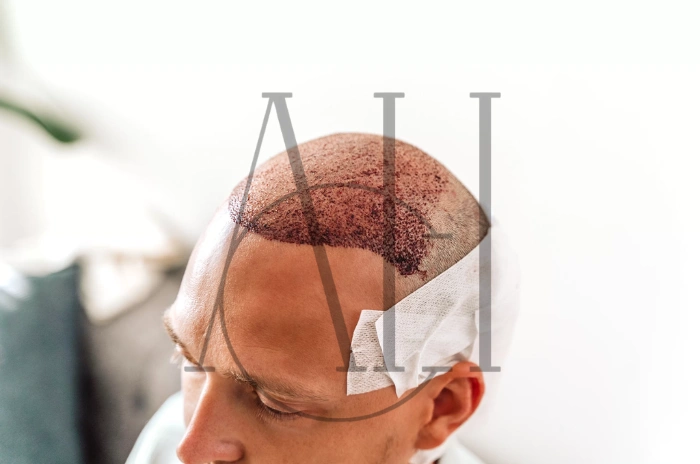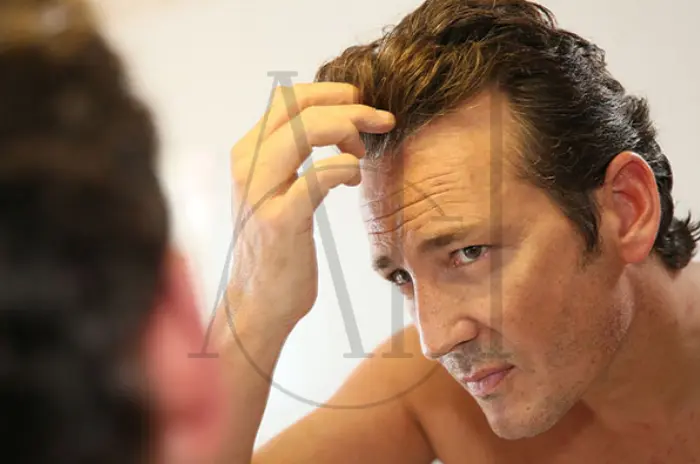Wearing headphones is a daily habit for many people, from remote workers and gamers to commuters and music lovers. But recent concerns have sparked questions: can headphones cause hair loss? Is it really possible that listening to music or attending Zoom calls could be contributing to hair thinning? In this article, we explore what science says about headphone hair loss, what causes it, and how you can prevent or treat it.
Table of Contents
ToggleCan Headphones Cause Hair Loss?
While headphones don’t directly damage the hair follicle, they can contribute to a specific type of hair loss known as traction alopecia. This occurs when consistent tension or friction is applied to the hair or scalp. If your headphones are too tight or worn for long periods, the resulting pressure can lead to hair loss on the scalp from headphones, especially in areas where the band touches your head.
Medical experts do not classify headphones as a direct cause of baldness. However, over-ear headphones, particularly with tight bands, may aggravate hair issues if combined with other factors like poor scalp health or existing hair thinning.
How Scalp Tension Might Affect Your Hair
The scalp contains thousands of tiny muscles and blood vessels that support hair follicles. When pressure is consistently applied—such as from tight or heavy headphones—it can reduce blood flow and oxygen supply. This limits nutrient delivery to follicles, weakening them over time and potentially resulting in hair thinning.
Persistent scalp tension can also lead to inflammation, which may interfere with healthy hair growth cycles. Over time, this can contribute to traction alopecia headphones users might experience.
Why People May Think Headphones Cause Hair Loss
Many individuals start noticing a bald spot or thinning line where their headphones sit. This perception is amplified among gamers or those who wear headphones for long periods daily. Since the pressure points match the headphone band location, it’s easy to associate the gear with the issue.
However, it’s important to consider other contributing factors like genetics, stress, or medical conditions. The loss caused by headphones may only be one piece of a broader puzzle.
Tips to Prevent Hair Loss While Using Headphones
1. Choose Lightweight or Looser-Fit Models
Heavy or tightly-fitted headphones put more strain on the scalp. Opt for models designed for comfort and breathability. Over-ear headphones with adjustable bands and soft cushions are better choices.
2. Adjust Placement Regularly
Don’t wear your headphones in the same position for hours. Shift the band slightly forward or backward every so often to reduce repeated pressure on the same scalp area.
3. Give Your Scalp Breaks Between Use
Take breaks every 30–60 minutes. Giving your scalp time to breathe and relax helps restore blood flow and minimize hair thinning risk.
4. Keep Your Hair Clean and Moisturized
A healthy scalp supports healthy hair. Clean hair reduces the buildup of oils, sweat, and bacteria under headphones. Consider using hydrating shampoos and scalp treatments.
Medication for Hair Loss
If you’re experiencing consistent hair loss, consult a specialist. FDA-approved medications like minoxidil and finasteride are commonly prescribed for pattern hair loss, though they may not specifically target headphone-related causes. Still, they can improve overall follicular health and stimulate regrowth.
Minoxidil boosts blood circulation in the scalp, while finasteride reduces hormone-related follicle shrinkage. Both can be helpful if headphones have contributed to broader hair thinning.

Hair Loss Supplements and Shampoos
Supplements containing biotin, zinc, iron, and collagen can improve hair health. Pair these with growth-boosting shampoos containing caffeine, ketoconazole, or saw palmetto to strengthen roots and fight inflammation. These treatments won’t directly resolve traction alopecia from headphones, but they support scalp wellness.
Consistent use of topical and oral products often delivers the best outcomes over time.
How Headphones Might Contribute to Hair Loss
1. Friction and Pressure from Over-Ear Designs
Over-ear headphones rest against the scalp, and extended use can cause rubbing and localized irritation. This mechanical friction may weaken strands and cause breakage.
2. Tight Headbands and Constant Tension
Headphones with rigid, non-adjustable bands may tug on the hair. Constant tension, especially in one position, can lead to follicle damage and traction alopecia.
3. Impact on Blood Circulation to the Scalp
Prolonged pressure compresses blood vessels beneath the scalp. Reduced circulation hinders follicle function, which may result in hair thinning over time.
Is Headphone Hair Loss Permanent?
1. Temporary Hair Loss vs. Long-Term Damage
If caught early, hair loss from headphones is usually temporary. Removing the source of tension and improving scalp care allows the follicles to recover. However, persistent damage can lead to permanent loss in some cases.
2. What Science Says About Traction Alopecia
Traction alopecia is well-documented in medical literature. It’s commonly caused by hairstyles like tight ponytails or braids—but similar effects can result from headphone use if constant tension is present.
When to See a Doctor or Hair Specialist
1. Signs Your Hair Loss May Not Be Headphone-Related
If you notice shedding outside the headphone zone, it may indicate hormonal, autoimmune, or nutritional factors. It’s best to consult a dermatologist to rule out underlying conditions.
2. Other Factors to Consider: Genetics, Diet, Stress
Poor diet, chronic stress, and family history play major roles in hair loss. Headphones might trigger a localized issue, but these broader concerns must also be addressed.
Treatments for Hair Loss Caused by Headphones
1. Stop the Traction
The first and most effective step is to stop the repeated tension. Switch to more scalp-friendly audio gear like bone conduction headphones or earbuds.
2. Natural Treatments
Oils like rosemary, peppermint, and castor oil have been shown to stimulate circulation and encourage growth. Scalp massages with these oils can promote healing.
3. Moderate Hair Loss
In cases of patchy or moderate thinning, minoxidil foam or serum may speed up recovery. Laser caps or microneedling devices may also support regrowth.
4. Severe Hair Loss
If the damage is extensive or permanent, a hair transplant may be a viable option. Follicular Unit Extraction (FUE) is commonly used to restore density in small, affected areas.
Myths Vs. Reality: Headphones And Hair Loss
Many myths exist, such as Bluetooth radiation causing baldness or headphones killing follicles directly. Science does not support these claims. Instead, it’s the physical pressure and friction that can contribute to hair loss.
Reality: Proper headphone use rarely causes permanent damage, especially with prevention.
What Science Says About Friction and Pressure
Dermatology studies confirm that mechanical stress—including tight headgear or pressure points—can lead to localized alopecia. This applies to helmets, hats, and even headphones if used excessively.
While the damage is typically superficial, long-term pressure may inflame follicles and disrupt normal hair cycling.

How Headphones Might Affect the Scalp
1. Pressure Points and Reduced Blood Flow
The headband exerts pressure at specific points, especially the crown. This can compress capillaries and reduce oxygen to follicles.
2. Friction Against the Hair Shaft
When headphones slide or shift, they can rub against hair strands, causing breakage and frizz. Over time, this mechanical wear contributes to hair thinning.
3. Hygiene and Sweat Buildup Under Headbands
Sweat and oil accumulation under the headphone band creates a breeding ground for bacteria and clogged follicles. Clean your headphones regularly to avoid these issues.
How to Wear Headphones Without Damaging Hair
1. Adjust the Band to Reduce Pressure
Don’t overtighten your headband. Loosen it enough to stay in place without compressing your scalp.
2. Switch Between Over-Ear and Bone Conduction Styles
Using alternative audio devices like bone conduction or open-back headphones reduces direct contact with hair-bearing areas.
3. Avoid Wearing for Long Continuous Hours
Limit sessions to 1–2 hours with breaks in between. Extended wear leads to buildup of pressure and heat.
4. Keep Your Scalp Clean
Sweat and dirt can make your scalp more vulnerable to damage. Wash your hair regularly and use a mild shampoo.
5. Avoid Wearing Headphones with Wet Hair
Wet hair is more fragile and prone to breakage. Always dry your hair completely before putting on headphones.
6. Use a Protective Barrier
Consider wearing a silk or satin headband beneath your headphones. These materials reduce friction and protect hair strands.
Headphones and Hair Loss Risk Table
| Headphone Feature | Hair Loss Risk Level | Prevention Tip |
|---|---|---|
| Tight Headband | High | Loosen or adjust the headband for comfort |
| Over-Ear Design | Moderate | Alternate with on-ear or bone conduction types |
| Heavy Build | High | Choose lightweight models |
| Long Wear Duration | High | Limit use to 1–2 hour intervals |
| Sweat Accumulation | Moderate | Clean scalp and headphones regularly |
| Dirty Earpads | Moderate | Sanitize headphone cushions weekly |
| Wearing on Wet Hair | High | Always dry hair before use |
| No Breaks Between Use | High | Take short breaks during use |
| Fixed Placement (No Adjustment) | Moderate | Shift headphone position regularly |
FAQ for Headphone Hair Loss: What Science Says & How to Stop It
Can wearing headphones truly cause hair loss?
Yes, in some cases. If worn tightly or for extended periods, headphones can lead to traction alopecia due to pressure and friction on the scalp.
What specific aspects of headphone use might contribute to hair loss?
Tight headbands, long wear duration, poor hygiene, and pressure points can all contribute to hair loss caused by headphones.
Is hair loss from headphones permanent, or can it be reversed?
In most cases, it’s reversible if addressed early. Persistent or severe damage may require treatments like minoxidil or even a hair transplant.
What are the best tips to prevent hair loss while using headphones
Use lightweight models, change placement often, take breaks, and maintain good scalp hygiene.
What does science say about the connection between headphones and hair loss?
Scientific literature supports that friction and mechanical tension can cause localized hair loss, similar to effects seen from helmets or tight hats.
How can I wear my headphones without damaging my hair?
Avoid tight bands, limit wear time, switch headphone types, and use protective barriers like headbands.
When should I be concerned about hair loss from headphones and see a doctor?
If hair thinning spreads beyond the headphone contact area or continues despite lifestyle changes, consult a dermatologist.
Are there any treatments for hair loss specifically caused by headphones?
Yes. Options include stopping tension, using natural oils, trying minoxidil, and considering hair transplant in severe cases.




